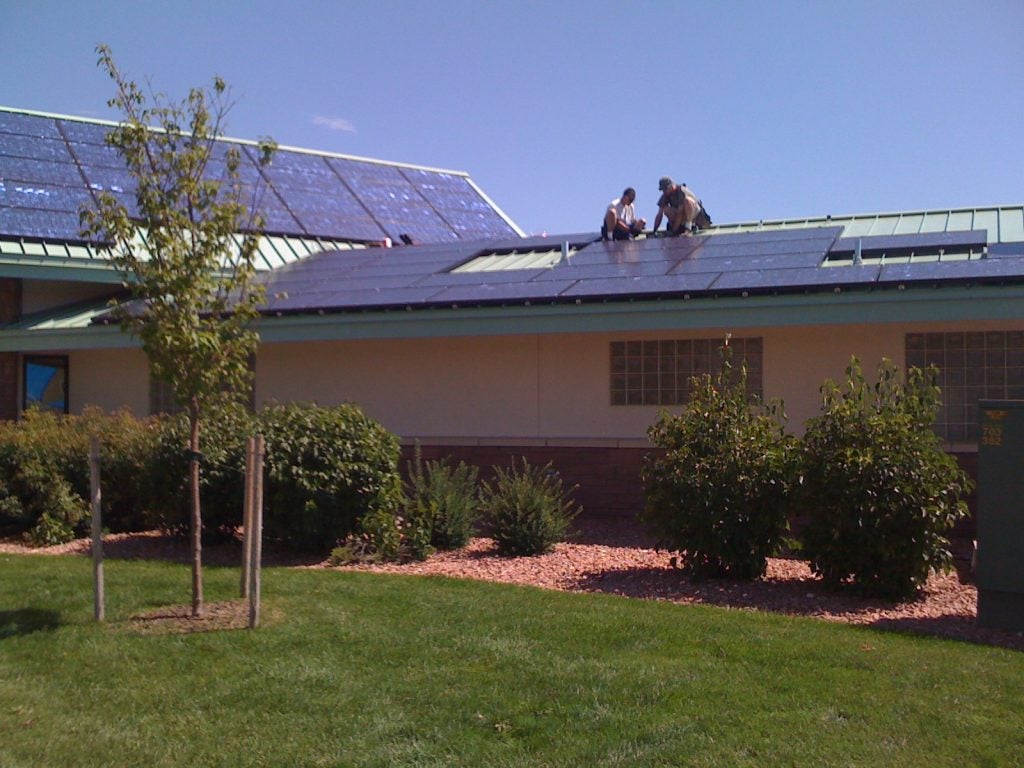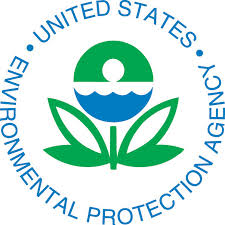
Workers install solar panels on a building in Superior, Colorado. Photo: SolarDave.com
(EDF’s Graham McCahan co-authored this post)
A newly-updated report is shedding light on what President Trump’s solar trade tariffs may mean for one state – and underscoring a tremendous opportunity to move forward toward clean energy, with all the benefits it can bring.
Xcel Energy filed its 30-day bid report update with the Colorado Public Utilities Commission on March 1. The update follows Xcel’s filing at the end of last year, in response to an “all-source solicitation,” as part of its Electric Resource Plan and its proposed Colorado Energy Plan.
Xcel’s plan would shut down two units at the Comanche coal plant in Pueblo, Colorado, and replace the capacity with a mix of lower carbon resources. Earlier results were unprecedented, with more than 80 percent of the bids coming from renewable energy and storage at incredibly cheap prices.
Xcel then provided bidders an opportunity to refresh their bids following President Trump’s final decision in the Suniva/SolarWorld trade case in January, which imposed tariffs on imported solar equipment.
The refreshed bids in Xcel’s updated report show minimal change relative to last year’s results and confirm that new wind and solar power in Colorado continues to be cheaper than existing coal plants – despite the trade tariffs.
According to the report, Xcel “received bid affirmation and refresh responses from all but one of the 400 plus bids.”
Of these responses:
“58% of the bids affirmed no change in pricing, 16% increased pricing, and 26% decreased pricing.”
The solar photovoltaic (PV) median bid price increased by only $1.5 per megawatt hour, and the median bid for solar PV with battery storage increased by $2.3 per megawatt hour – still the cheapest solar plus storage bids in the U.S. to date.
Based on analysis by Carbon Tracker, this means that the median bid price for solar is lower than the operating cost of all existing coal units in Colorado, while the median solar plus storage bid is lower than roughly 70 percent of operating coal capacity.
Federal renewable energy tax credits are likely buffering some of the solar trade tariff effects. While recent analyses show significant cost declines for renewable energy, with wind and solar becoming increasingly competitive with conventional generation even on an unsubsidized basis, the renewable tax credits are still a significant factor contributing to favorable wind and solar economics in the short-term and in the face of the Trump solar tariffs. That said, it’s important to recognize that coal generation has enjoyed state and federal incentives for a century, and continues to do so.
The tax credits are being phased down in the next few years, with the production tax credit for wind phasing out in 2019 and the investment tax credit for solar in 2021. So it will be critical to act now to take advantage of those credits to deploy clean energy at lowest cost and secure the associated economic and public health benefits.
Colorado is an example of this tremendous opportunity to move forward now to lock in incredibly low-cost resources, with no fuel costs and therefore no medium- to long-term volatility or risk to consumers. The Xcel bids show that there is a lower-cost clean energy alternative to keeping the polluting Comanche units online in Pueblo, and it no longer makes sense to continue to operate and maintain these units at the expense of Colorado customers and Colorado air quality.
There is even the potential for low-cost utility-scale on-site solar to be used by Evraz Rocky Mountain Steel – a steel mill and the single largest manufacturer in Pueblo and largest producer of premium rail in North America – to help cut costs and keep manufacturing jobs in Pueblo.
Evraz is Xcel’s largest retail customer in Colorado, and the 175-200 megawatt Evraz solar project that the company is considering would provide a cost-effective option to meet Evraz’s growing needs, help guarantee Evraz low and stable electricity rates in the future, and therefore help keep Evraz in Colorado.
We are already witnessing some of the impacts of Trump’s solar tariffs on jobs in some areas of the U.S., and the potential for these tariffs to stall American competitiveness and innovation – for instance, American solar company SunPower recently announced that it will lay off hundreds of workers, largely from its research and development and marketing positions.
But the Xcel refresh bids in Colorado – a state blessed with high solar and wind potential – provides an important first look at what the solar tariffs mean for the competitiveness of clean energy in a state where clean energy conditions are favorable.
In Colorado, it is clear that the advantages of clean energy for consumers and the local economy remain compelling. Despite the tariffs – and in the presence of renewable tax credits, rapid technological advances, and plummeting costs of solar and storage technologies – solar still outcompetes fossil fuels. It also helps lower costs to consumers, and protects local manufacturing jobs.
The state should act now to lock in those benefits for the people of Colorado.











 (EDF Legal Fellow Samantha Caravello co-authored this post)
(EDF Legal Fellow Samantha Caravello co-authored this post)
 (EDF’s John Bullock co-authored this post)
(EDF’s John Bullock co-authored this post)  At EDF, we recently gained access to some newly-released emails that provide a troubling glimpse of the efforts to
At EDF, we recently gained access to some newly-released emails that provide a troubling glimpse of the efforts to